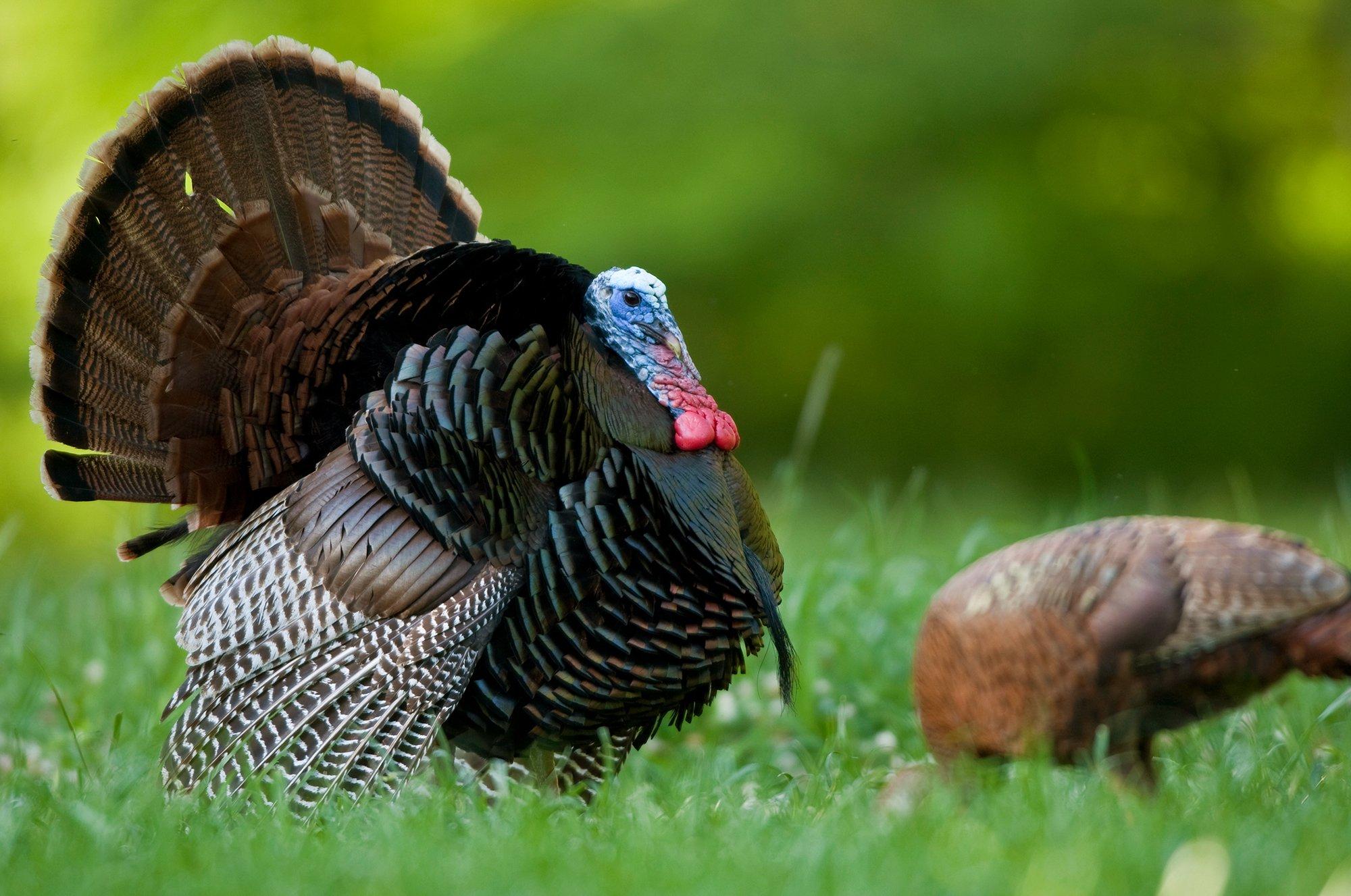Early turkey seasons are off to a great start in northern states, even if springtime weather seems to be a little behind

The author recommends setting up close on roosted birds with a jake decoy and breeding hen. Image by Danita Delimont
My nephew Timothy scored about an hour after daylight on a big gobbler during the Wisconsin youth opener last Saturday. Calling to henned-up toms, even though they flew down not 100 yards from our decoys, was futile. They joined the hens and virtually stopped gobbling shortly after daylight. We also observed a few jakes strutting and gobbling near the group, too, meaning that flocks aren’t totally split up yet. Meanwhile, as I predicted might happen, a satellite tom started gobbling hard about 500 yards away. I called loudly to him and he answered, but eventually quit gobbling. I stopped calling and let his curiosity build.
Five to 10 minutes later, Timothy spotted him. From 200 yards through my binos, it was obvious that the gobbler was fully committed and on his way, and so I helped Timothy prop his .410 on our Trigger Sticks. After the bird thumped our jake decoy a few times, Timothy dropped him.
In Wisconsin, dominant toms are still very henned-up, but they’re also fired up despite the wintery onslaught over the last week. A friend hunted Wisconsin’s time period A opener on Wednesday, and he coaxed one of two strutters guarding a hen flock in the snow to within range by crawling in and presenting a strutter decoy.

Under the author’s mentorship, 12-year-old Timothy Zahringer dropped this gobbler during the Wisconsin youth hunt. The satellite bird was advertising from 500 yards away, and it couldn’t resist the author’s loud calling and Avian-X jake and Laydown hen decoys. Image by Darron McDougal
Kaleb Kisky of Whitetail Freaks reported similar observations in southern Iowa and northern Missouri. He’s taken two birds so far, plus he recently took his cousin Jacqui Galang on her first turkey hunt. While hunting and scouting, he reported that toms are with large hen flocks.
“We hunted two mornings,” Kisky said, regarding his cousin’s hunt. “The first morning, the toms didn’t like my hen-and jake-decoy setup. I roosted the birds one evening, and then I sneaked within 80 yards of the roost and set a blind in the dark. The following morning, I used the same decoys, but I put the hen in the breeding position. When the two gobblers flew down and started walking across the field with the hens, they became very territorial and came in fast to beat up the jake decoy. Jacqui shot one of them pretty quick.”
Kisky mentioned that toms are splitting off from the hens at around 9 a.m., and have been regrouping with hens around 3 to 4 p.m. “The best window to kill these birds right now is between 9 a.m. and 2 p.m.,” he said.
Hans Walthert of New York also checked in. “Bird numbers are up in my estimation,” he said. “Poult success for the past two years has been the best I’ve seen in a while. Spring is early by about two weeks this year. I heard some gobbling during last week’s warm snap.”
Walthert was hunting along Maryland’s Eastern Shore when he checked in. “I hunted this morning for the first time this season,” he said. “I’d roosted a longbeard last night with at least one hen in the vicinity. This morning, he wouldn’t come closer than 60 yards, but he also never saw the decoys.
“Yesterday, I saw a different flock of three jakes and five hens,” he continued. “There were no mature birds around. A local who turkey hunts told me that there haven’t been as many birds seen in fields as in past years.”
As I write this, I’m a couple of days away from hunting South Dakota. Not only am I excited to chase Merriam’s turkeys, but I’ll be thrilled to bring you an update on my hunt in next week’s report. Until then, scout and set up close to roosted birds with a jake decoy and breeding hen, and if that doesn’t work, try to get on birds during midday when they’re more responsive to calling.










